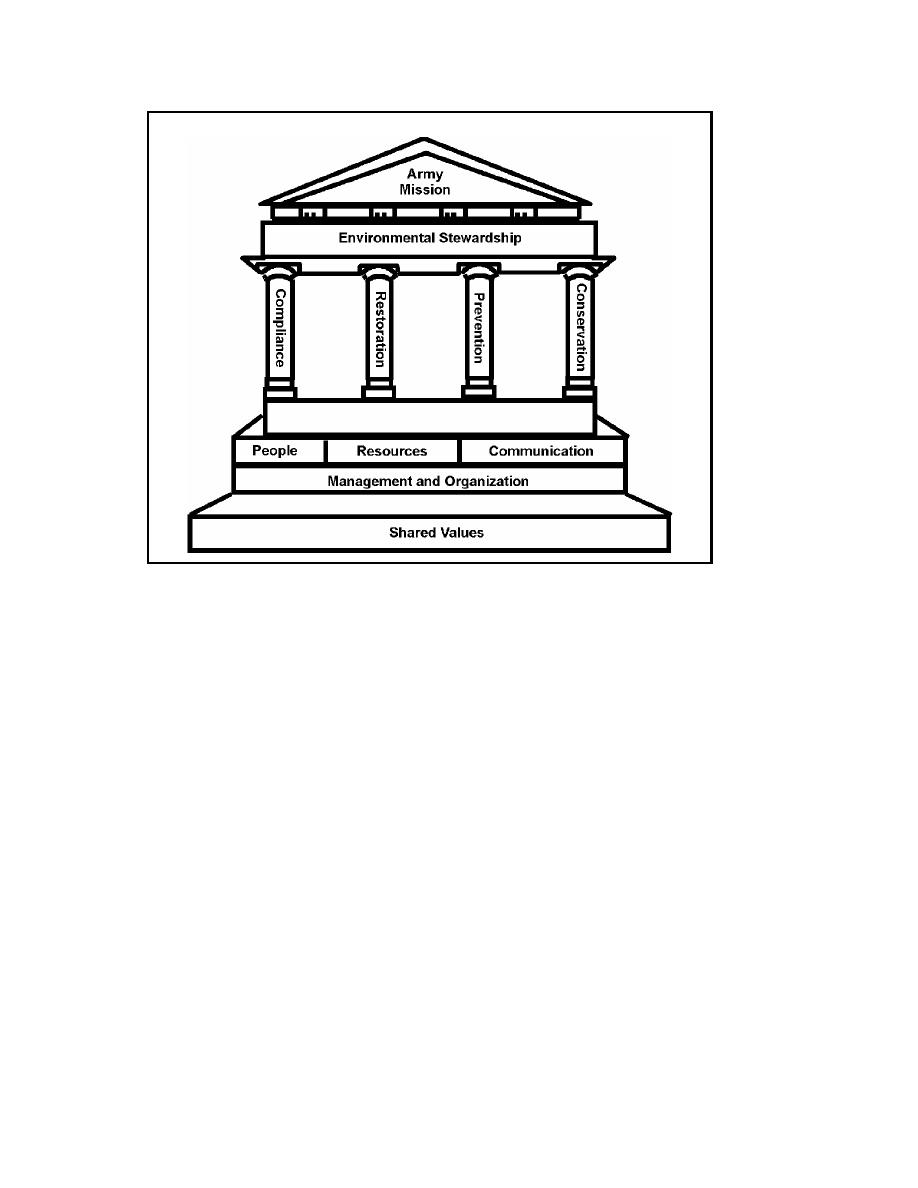
Figure
1. Army's environmental strategy model
The environmental model shows how these four pillars support environmental stewardship. The
Army mission, at the top, requires the Army to manage and use natural resources wisely. Just as a
building's walls support its roof, the model's four pillars support environmental stewardship.
Environmental stewardship, in turn, supports the Army mission.
a. Compliance. Compliance with environmental regulations is now a necessary cost of doing
business. The Army expects soldiers to obey local, state, federal, and host nation (HN) environmental
requirements. By following the unit environmental SOP, the environmental guidance that leaders
publish in operation orders (OPORDs), and installation environmental regulations, soldiers can help
the Army meet its compliance goal.
b. Restoration. Most soldiers do not have any restoration responsibilities. However, to make
the installation a safer place for soldiers and their families, the Army is cleaning up its contaminated
sites. By following the principles under the other three environmental pillars, soldiers can help the
Army eliminate the need for a restoration pillar.
c. Prevention. Prevention is the Army's attempt to reduce or eliminate pollution. Preventing
pollution is always more effective and less costly than cleaning up polluted sites. Soldiers can
support prevention efforts by reducing, reusing, or recycling waste products.
(1) Reduce. If soldiers perform a job carefully, they can often reduce the amount of
pollution produced. For example:
Storing cans of paint properly prevents the paint from ruining and prevents
pollution.
EN 5700
1-4


 Previous Page
Previous Page
